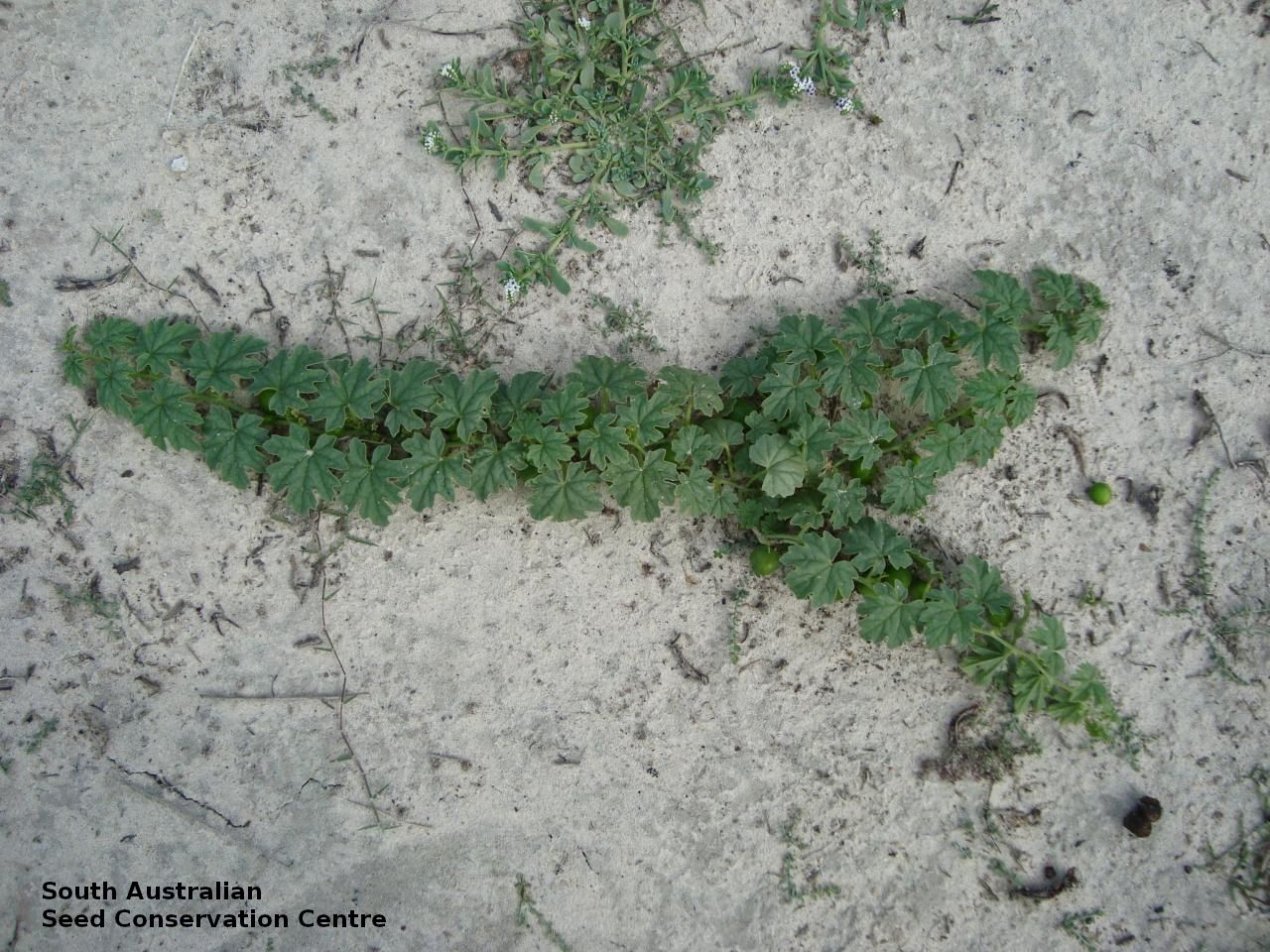
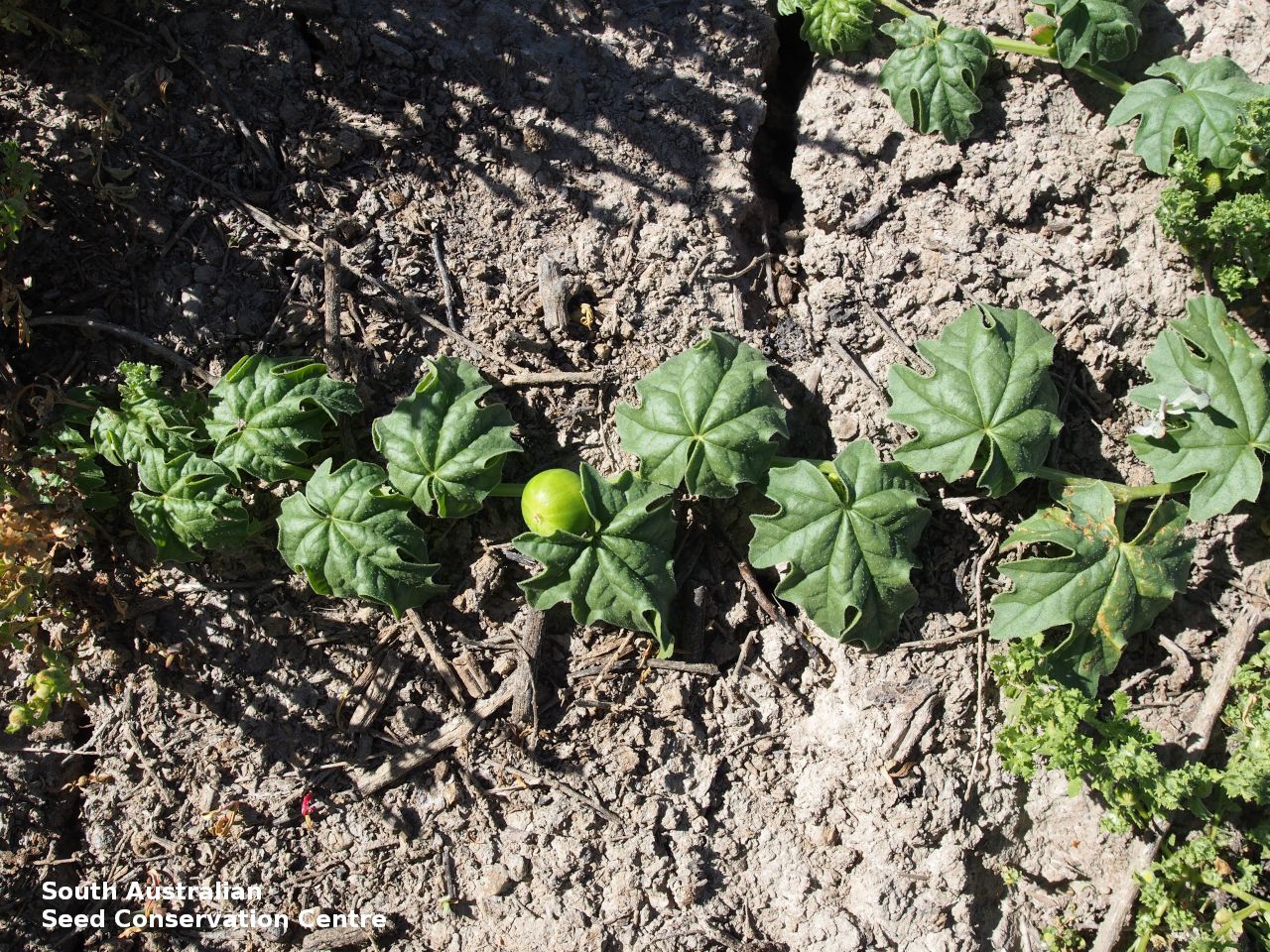
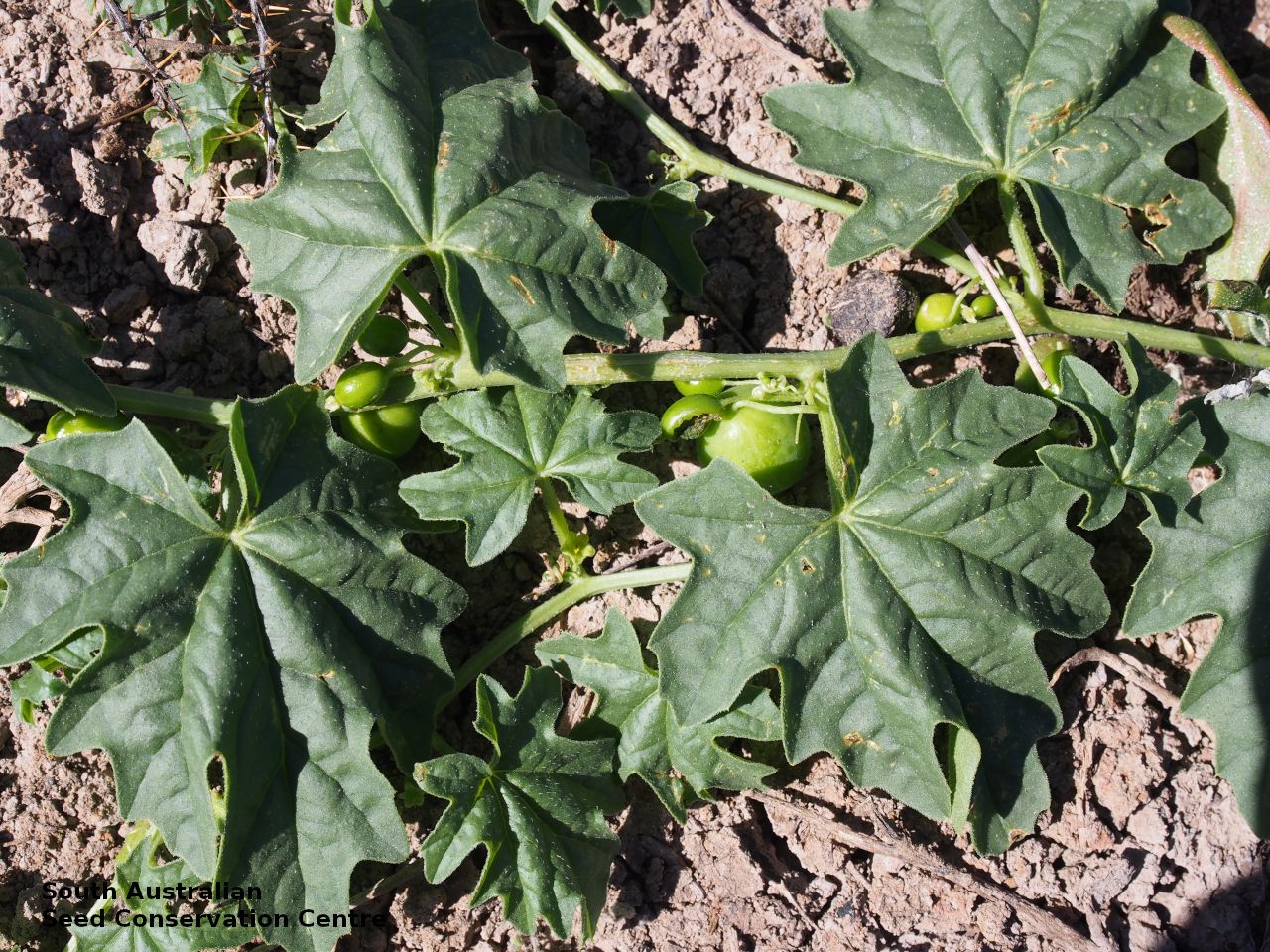
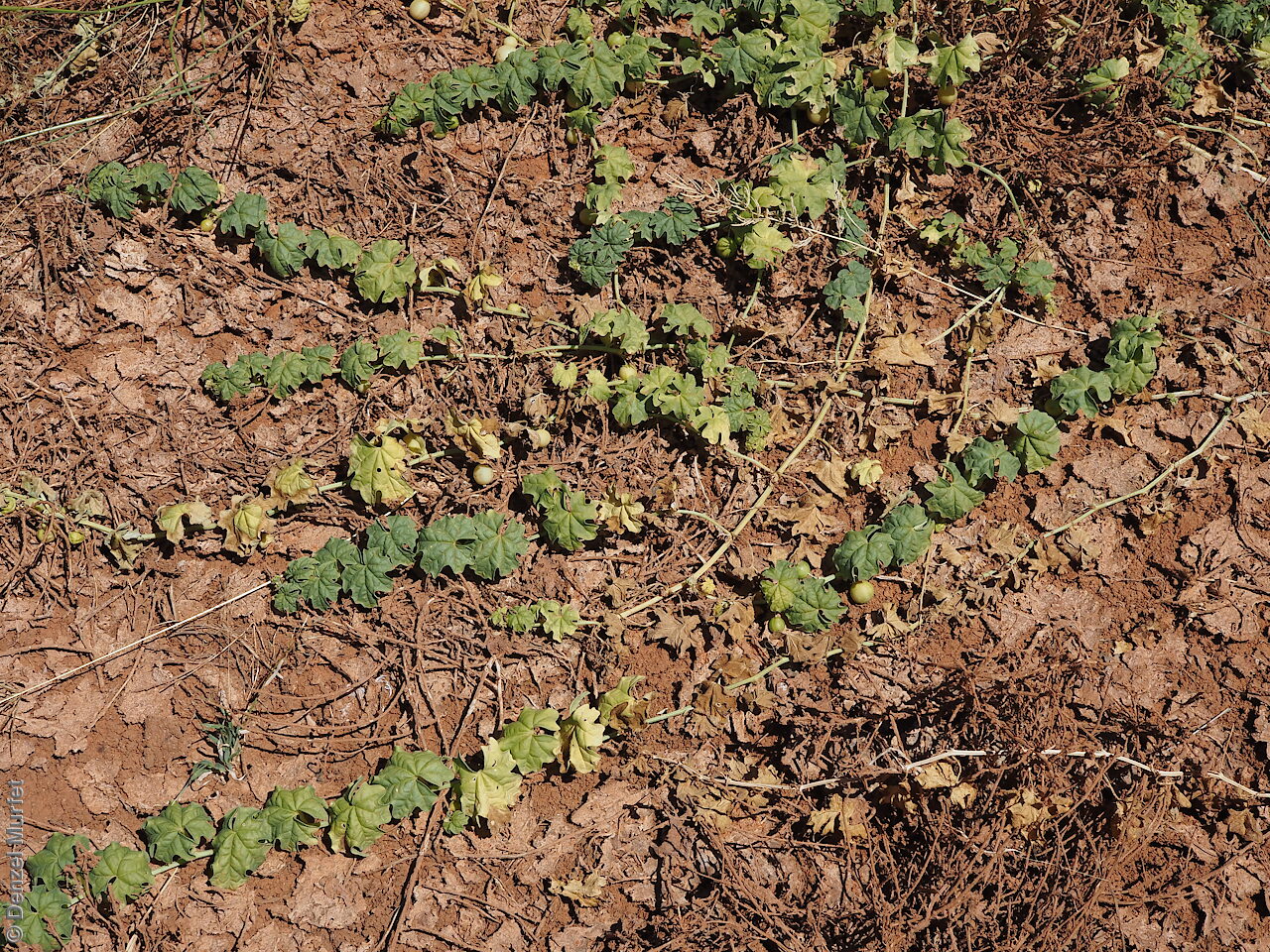


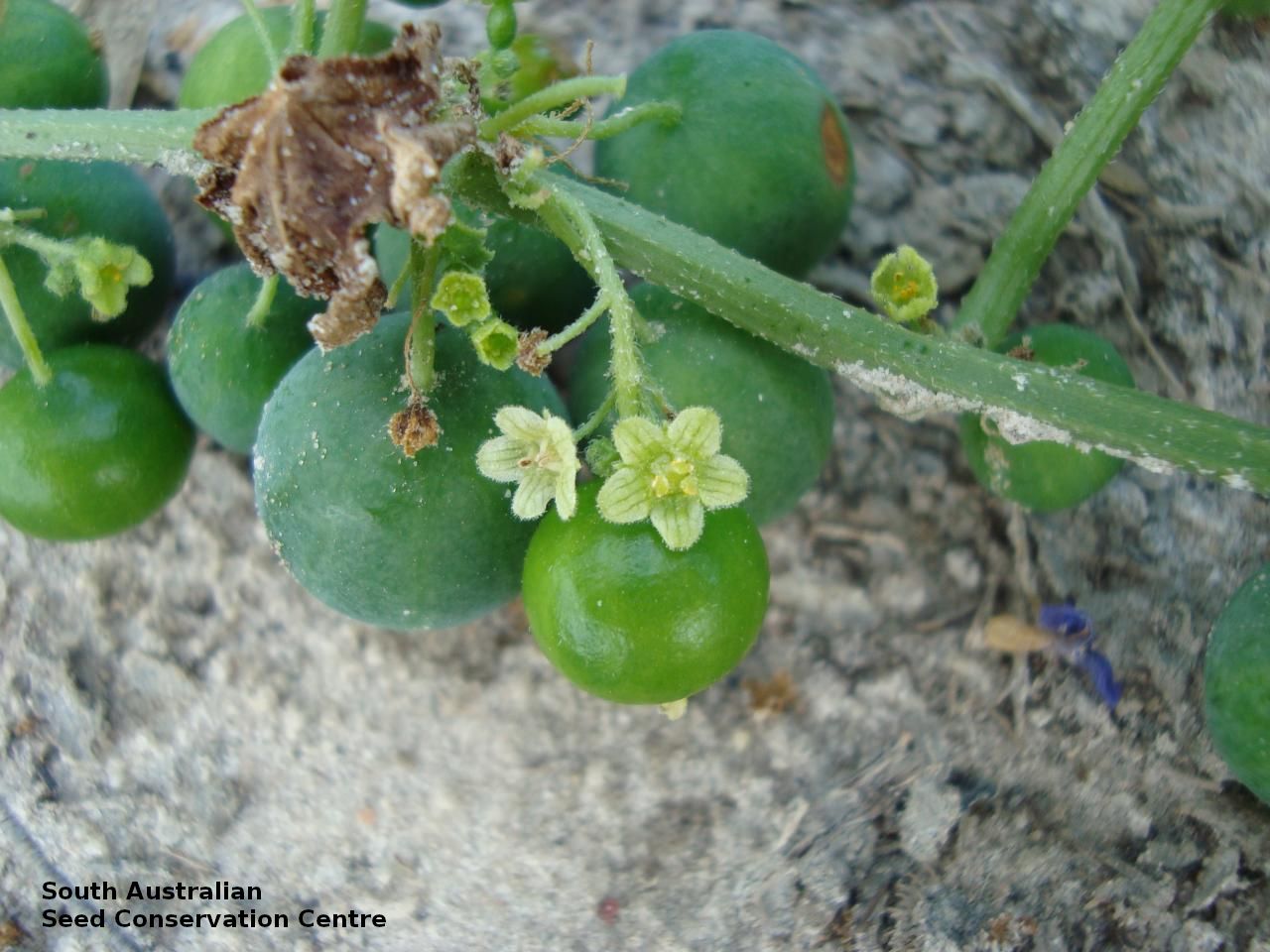

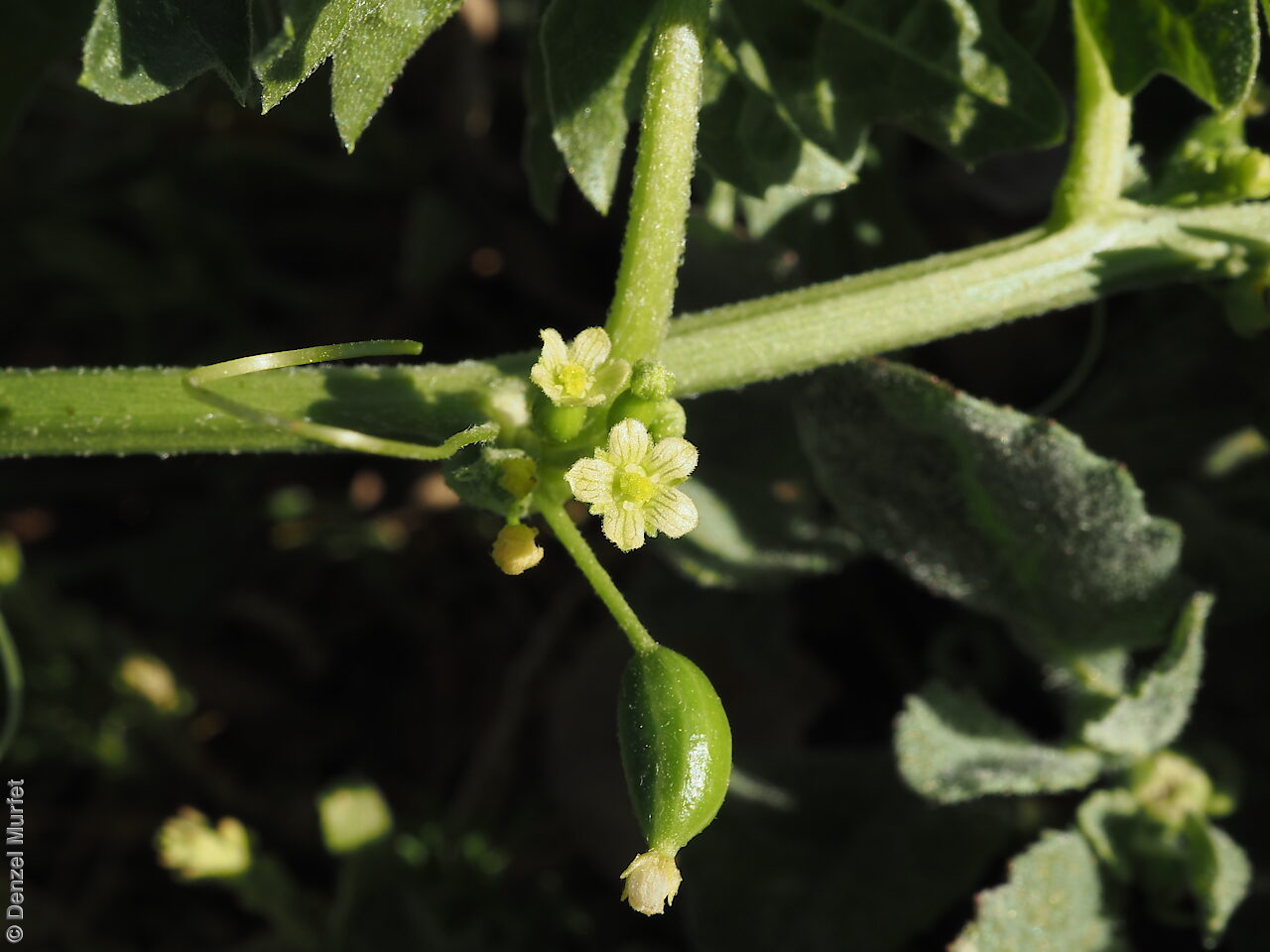
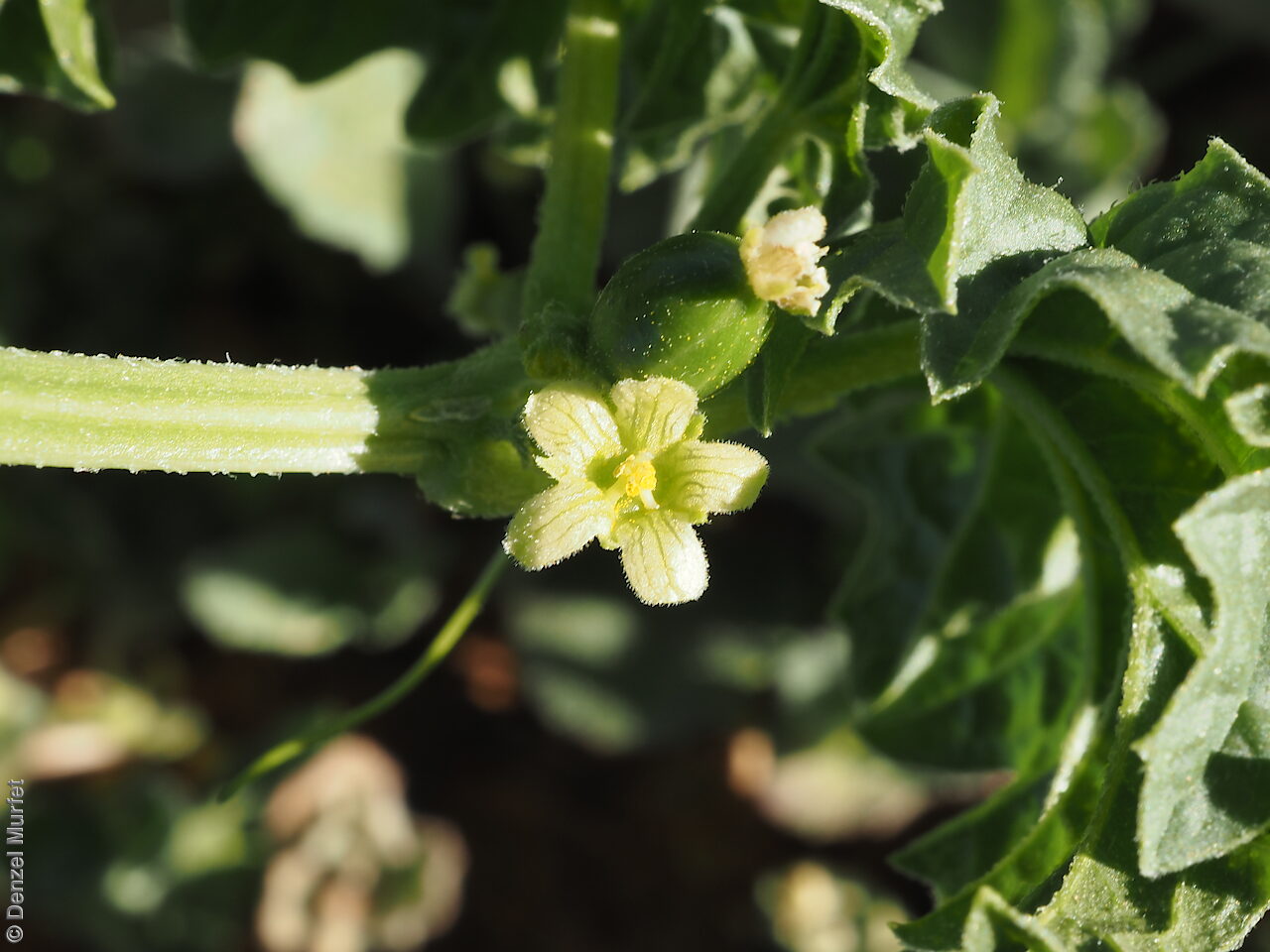
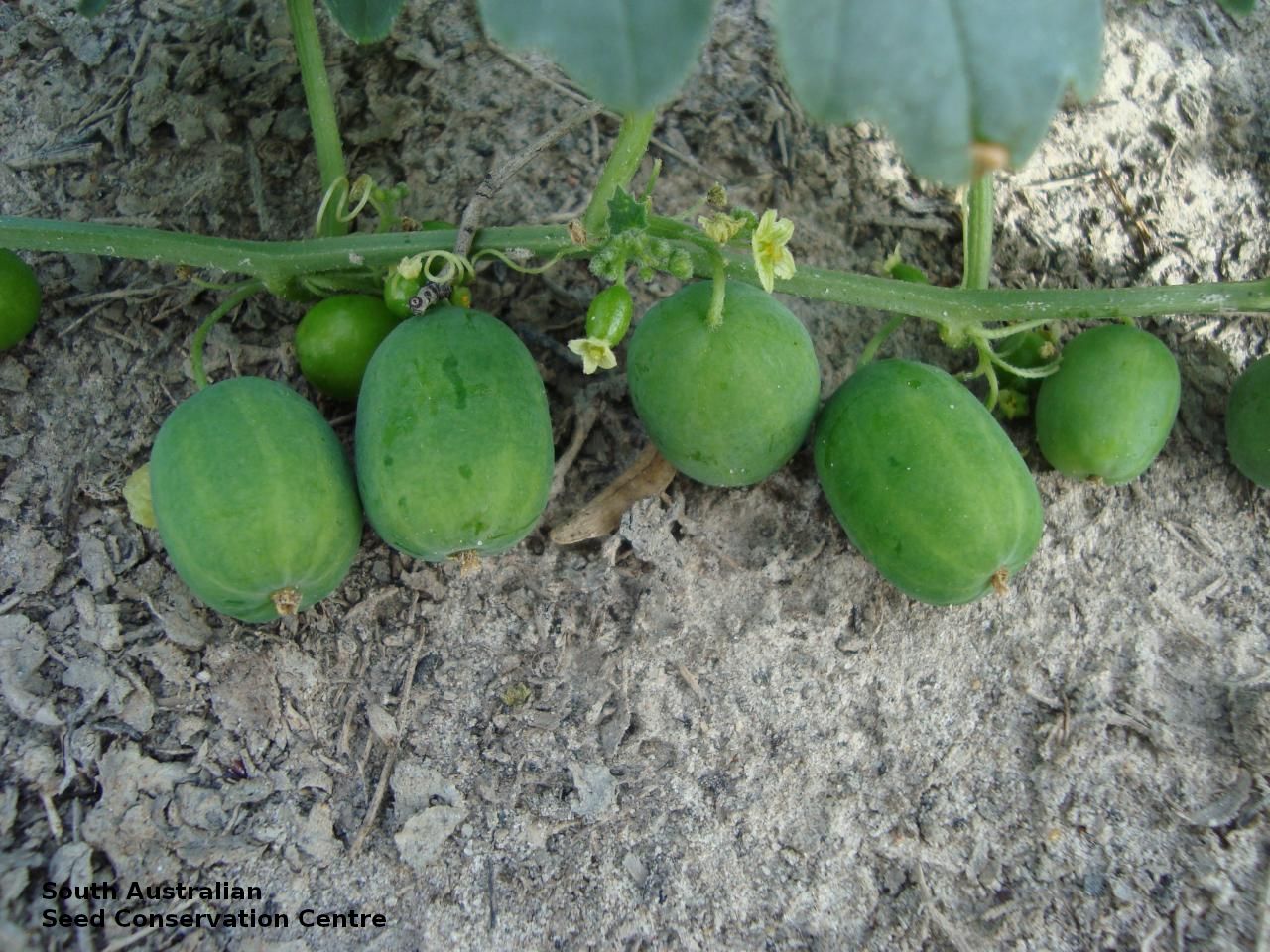
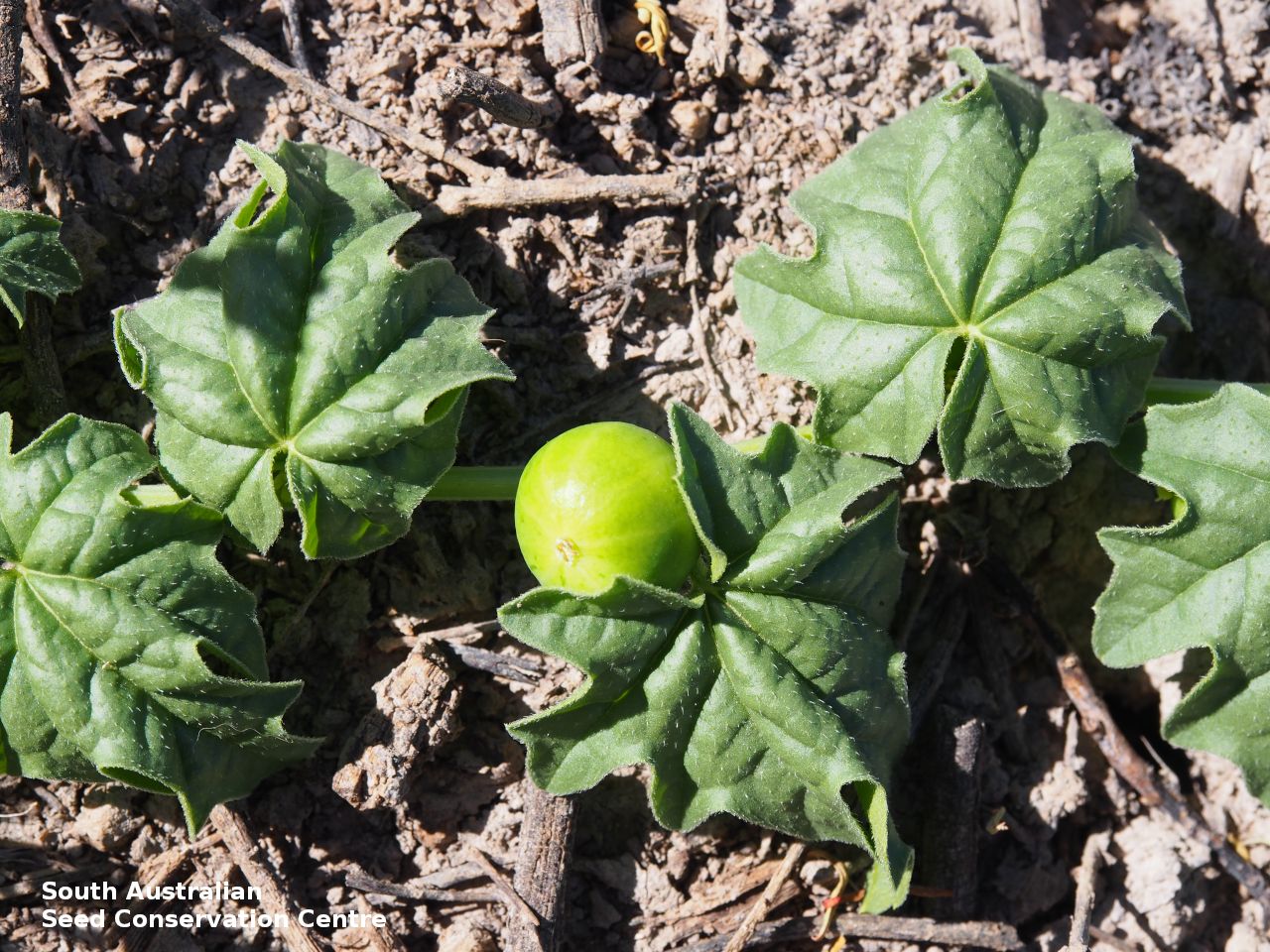

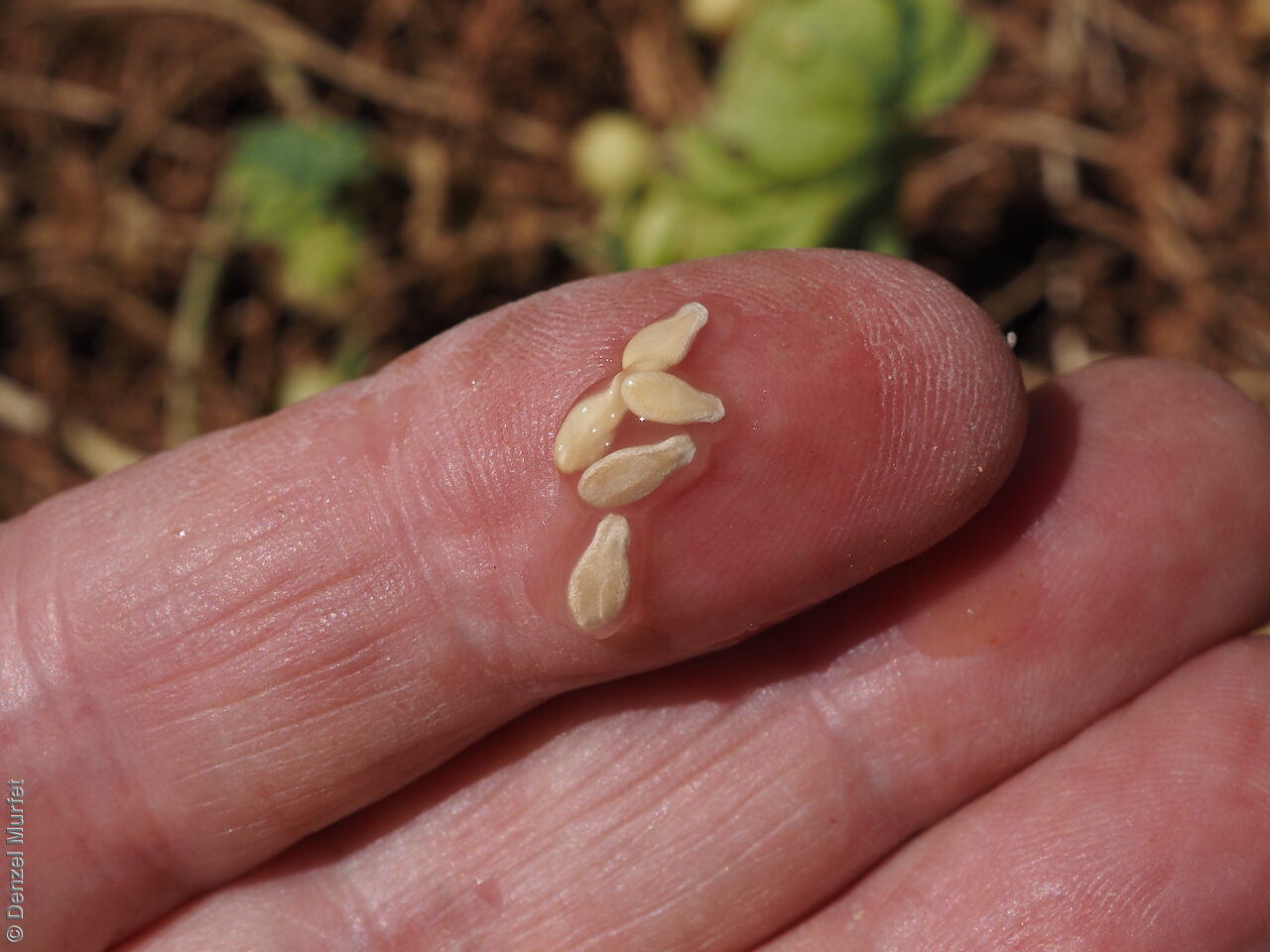
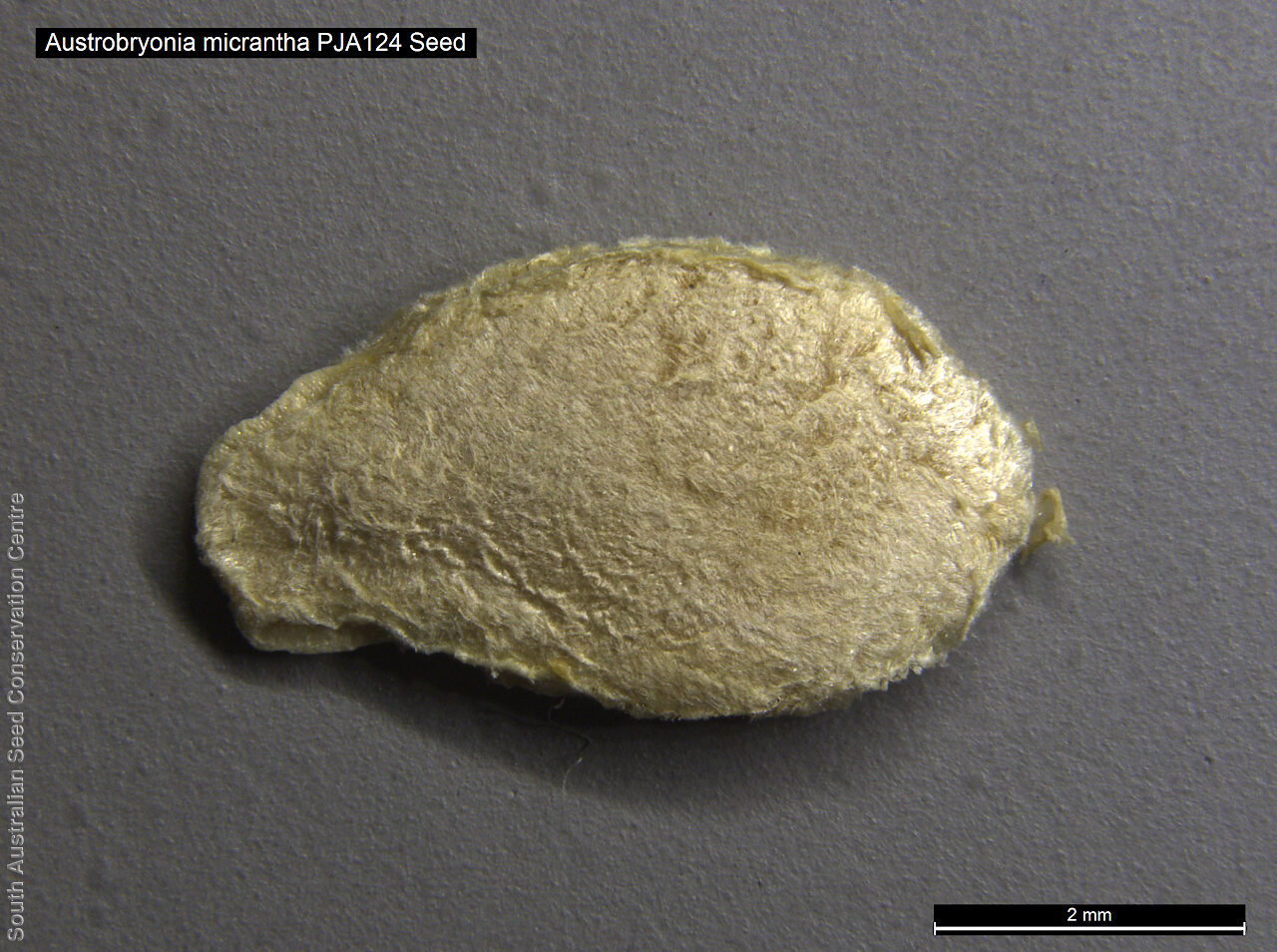
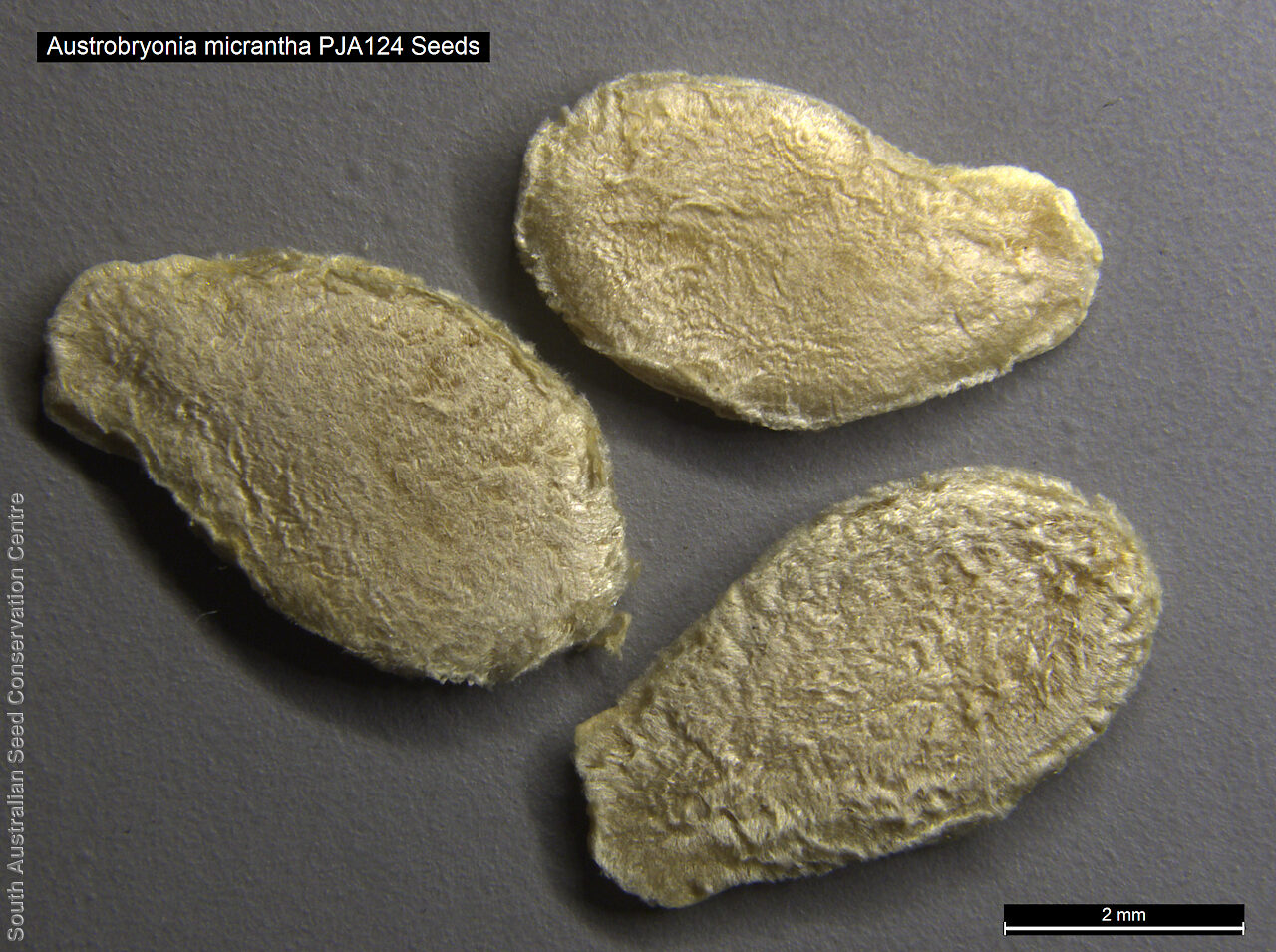

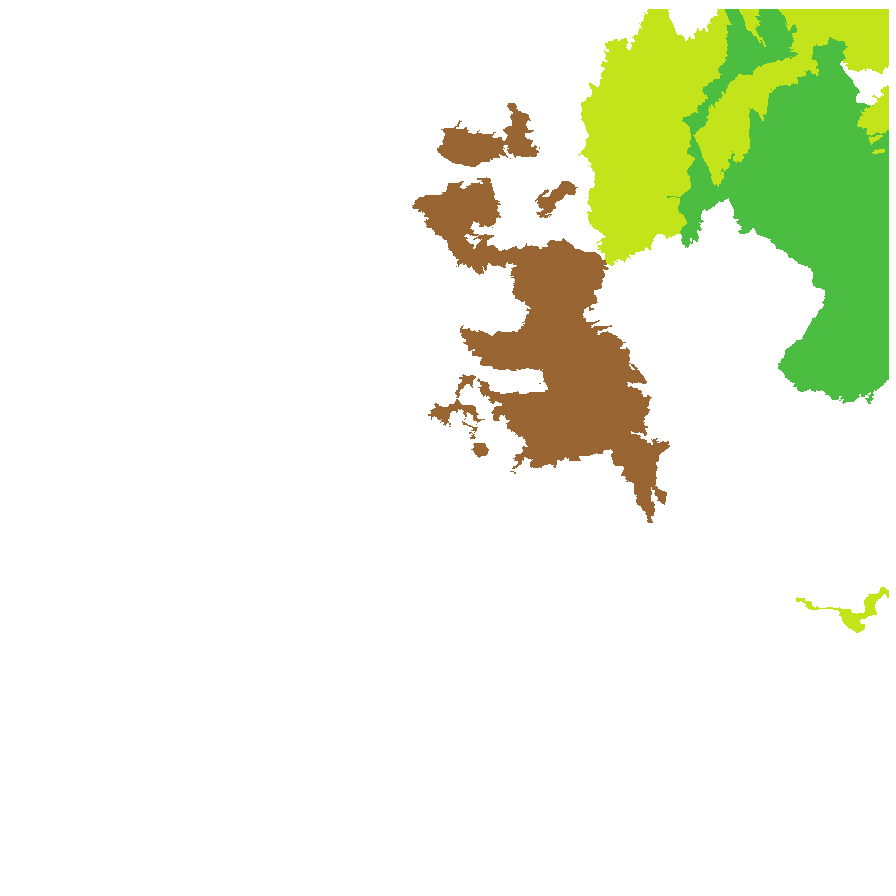
Botanical art
Prior names
Mukia micrantha
Zehneria micrantha
Melothria muelleri
Melothria micrantha
Cucurbita micrantha
Cucumis muelleri
Common names
Mallee Cucumber
Desert Cucumber
Etymology
Austrobryonia from the Latin 'austro' meaning southern and Bryonia, a genus in the Family Cuburbitacea and an Ancient Greek name used by Dioscorides, alluding to the genus close relationship to Bryonia but restricted to Australia. Micrantha from the Greek 'micros' meaning small and 'anthos' meaning flower, alluding to the species tiny flowers.
Distribution and status
Found in the eastern part of South Australia from Lake Eyre to the Murray regions on clay soil in river flood plains, waterholes and swale in dune fields. Also found in Northern Territory, Queensland, New South Wales and Victoria. Native. Common in South Australia. Common in New South wales and Victoria. Uncommon in Northern Territory and Queensland.
Herbarium regions: Lake Eyre, Gairdner-Torrens, Murray
NRM regions: South Australian Arid Lands, South Australian Murray-Darling Basin
AVH map: SA distribution map (external link)
Plant description
Annual forb with a perennial rootstock; prostrate with stems to 1m long. Leaves alternating along the stem to 6 cm long and 45 mm wide; flat, rough with toothed edges and usually lobed. Male and female flowers usually mixed, in few-flowered clusters. Flowers small, pale yellow or greenish yellow, with 5 petals, in groups of 2-5 at the bases of the leaves. . Fruits are globular fleshy green fruit ripening to greenish-yellow. Seeds are flat, pale-brown, ovoid seed to 5mm long and 3mm wide.
Seed collection and propagation
Collect seeds between April and June. Collect maturing fruits that are large and turning yellowish, with hard seeds inside. Place the fruit in a bucket of water and rub the flesh off with your hands. Drain the water and wash again if required to remove all the flesh. Then spread the wet seeds on some paper towel and leave to dry. Store the seeds with a desiccant such as dried silica beads or dry rice, in an air tight container in a cool and dry place. From two collections, the seed viability was high, ranging from 90% to 100%. Seeds are non-dormant, viable seed should germinate readily.
| Location | No. of seeds (weight grams) | Number of plants | Date collected | Collection number Collection location | Date stored | % Viability | Storage temperature |
|---|---|---|---|---|---|---|---|
| BGA MSB | 2,350 (9.35 g) 2,350 (9.35 g) | 17-May-2006 | PJA124 Murray | 1-Aug-2007 | 90% | -18°C | |
| BGA | 6,100 (32.38 g) | 6-May-2007 | RJB71583B Lake Eyre | 19-Sep-2008 | 100% | -18°C |
Number of plants: This is the number of plants from which the seeds were collected.
Collection location: The Herbarium of South Australia's region name.
% Viability: Percentage of filled healthy seeds determined by a cut test or x-ray.